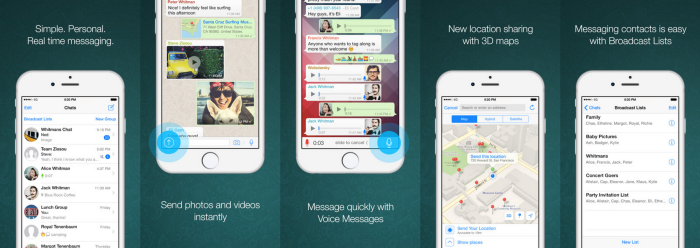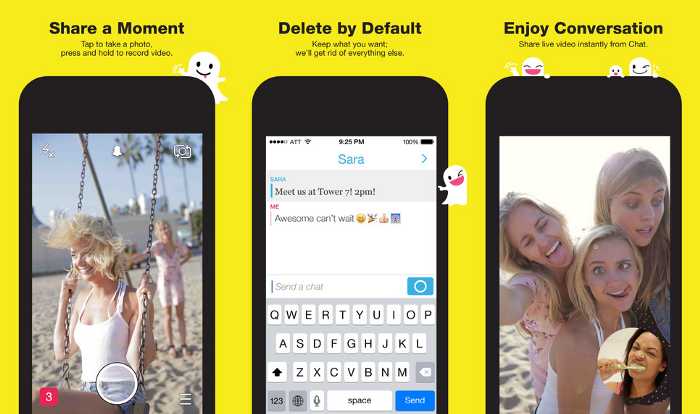First you want it. Then you need it. Then everybody can’t live without it — like a utility.
Right now Facebook’s developer conference, F8, is underway, and it is massive. But I’m thinking back to the early days of the company. Facebook was the first company (as far as the Internet knows) to create a growth team. There’s no argument that its team has been effective at helping get sustainable user growth. What people forget is that before focusing on growth, Facebook reached what Marc Andreessen calls product-market fit. Product market fit is, “being in a good market with a product that can satisfy that market.”
Yet today there’s an endless stream of great content in the form of blog posts and ebooks about distribution, traction, growth, growth hacking, growth marketing, and even growth teams. It’s easier than ever to learn because growth isn’t an art, it’s a science, and the methods are binary. You come up with hypotheses, you test them, you iterate and you prioritize based on learning what’s high impact for your product.
Every single piece of content that’s written about growth should include this disclaimer:
You can’t grow a consumer product that hasn’t reached product market fit.
I’ve spent most of my career building consumer related products, and getting to product market fit is one of the most challenging feats. Traditional value propositions that focus on solving a “problem” or “job to be done” don’t quite cut it when creating new products for consumers. You need to have a live product of what you believe the world could look like. You’ll watch, test, and analyze then lastly synthesize what people are doing in order to build a good product and a memorable experience. What people often forget (especially in the Valley) is that the product experience comes from people’s emotional needs.
Your customers are consuming an experience. How do you test, ask questions and synthesize that information? How do you think about your product over the course of a few weeks to a few years and evolve it? It’s tempting to think about just the initial numbers but it’s better to focus on the entire experience. Quantitative metrics will always give you lagging indicators but won’t tell you how to think about your product holistically.
I’ve been privileged to have built, grown and watched Facebook apps (yes, built and distributed thousands), Facebook games, mobile games, and consumer mobile apps. From these experiences, I’ve managed to develop a framework for thinking about consumer product experiences and the distinct phases they go through.
There are three phases. Consumer products start as a want then turn into a need. In the final phase, which most don’t get to, they evolve into a utility. Here’s how I define the three phases:

Want — Solves a core value proposition that’s very unique and feels like a novelty.
Need — People can’t live without it and keep coming back for more.
Utility — It becomes a feature of other products.
The fastest growing consumer products have already gone through these phases while the up and coming ones are in the middle of one of these three phases right now. Facebook and Twitter are great examples of growing companies with large user bases that have gone through or are in the middle of this progression.

This video of Mark Zuckerberg from the early days of Facebook helps explain the thinking that enabled Facebook to evolve into a utility.
Want
Launched it at Harvard in early February of 2004 and within a couple of weeks two thirds of the school had signed up.
Facebook became a want by allowing college students to view “the facebook” for their college. They initially tapped into an existing behavior by launching at schools that already had a static student directory. By making it a service where people could browse profiles and add friends they went just the right amount beyond the static directories of the day.
Need
I think Facebook is an online directory for colleges.
Part of making a difference and doing something cool is focusing intensely.
There doesn’t necessarily have to be more.
Based on this video from the early days, the folks at Facebook didn’t have ambitions beyond college students. Facebook became a need by focusing intensely on providing a product for college students that they can’t live without. A key feature that accelerated Facebook through this phase happened in December 2005 when the ability to tag friends in photos was added. College students quickly became addicted.
Utility
There was a level of service that we could provide while we were just at Harvard that we can’t provide for all of the colleges. And there’s a level of service when we are a college network that we wouldn’t be able to provide if we went to other types of things.
In September 2006, about two and a half years after the service first launched at Harvard, Facebook opened up the product to everyone. This was the beginning of Facebook’s path to becoming a utility. In fact, just another two years later, folks at Facebook themselves called it a “social utility.”
Once a consumer service becomes a utility, you will commonly see its features in other products. The behavior which the product encourages has become cultural, thus the product is so ingrained in people’s lives that it feels normal to them. Facebook’s resilience can be attributed to its relentless execution towards becoming a platform, a transition that enabled developers to integrate Facebook features and functionality into their own creations. Facebook didn’t sit and watch other products copy its features: it made it super simple to integrate and got the lion’s share of the benefits along the way.

It all started with a tweet on March 21st, 2006 by Jack Dorsey. Since then Twitter has experienced many ups and downs. The story of Twitter can be told by a few key moments in time and this Google trends graph:

Google Trends for Twitter
Want
On January 15th, 2009 Twitter user @jkrums posted this tweet about a plane crash in New York’s Hudson River. That was a big inflection point for Twitter.
http://twitpic.com/135xa - There's a plane in the Hudson. I'm on the ferry going to pick up the people. Crazy.
— Janis Krums (@jkrums) January 15, 2009

January 15th, 2009 Hudson River Plan Crash Tweet
It was Twitter that broke the news about this event, not a media outlet or blog. That was the moment people started to understand how Twitter could uniquely fit into their lives. Its usefulness was now much more clear.
Need
After the Hudson River tweet, Twitter had steady growth and became a vital source of news and information for consumers. It was constantly mentioned by the media and on television with phrases such as “follow us on Twitter.” People signed up for Twitter because of how often it was mentioned in the media, and many of them kept coming back to read tweets from accounts they followed.

Twitter’s Decline
A steady decline started after December 2012 when Google trends show that searches for Twitter peaked. Currently, Google trends show that Twitter is back to an early 2011 level of popularity.
Utility
Unlike Facebook, Twitter didn’t quite make it to the utility phase of their product. Progress through the need phase was going great. The developer platform bloomed early. Developers started to use the Twitter API, building new clients and social media analytics tools. The steady decline became a reality in December 2012 after Twitter started to cut off API access to third-party apps in August.
Facebook’s strategy of becoming an integral part of other company’s products was key to them becoming a utility. Twitter was on that same path prior to their limiting developer API access. The likely cause of the product not becoming a utility is the negative sentiment caused by these limits and historical lack of urgency in evolving the product for consumers. There’s a big attempt being made by the team to get the love of developers back but I wonder if it’s too little, too late.
Evaluating Consumer Products
Using this framework, we can identify what phase a consumer product currently is in and think through how it might be able to evolve into becoming a utility. Even some of the more popular products are still in the early phases of their lifecycle.

WhatsApp for iPhone
When WhatsApp was in the want phase in 2008, the team focused on providing an experience that was fast, simple and cross-platform. Everything that Apple’s iMessage did for you but across platforms. This was before iPhone had a huge percentage of the mobile market. They supported the lowest common denominator of phones and created a memorable communication experience as a result. On WhatsApp your identity was tied to your phone; you were able to text people for free. Nothing of its kind existed at the time. It was unique and felt like a novelty.
It has since become a need as more and more people started using it and the network effects kicked in. One way for WhatsApp to evolve into a utility is by having other companies integrate WhatsApp into their products. This strategy is similar to that of Facebook, which now owns the company. Read more from Jim Goetz on why the WhatsApp acquisition makes sense.

Instagram for iPhone
Timing is everything and Instagram proves it. During the want phase of Instagram in late 2010, it was one of the first third-party photo apps on iPhone. Most people were focused on the Facebook platform and weren’t convinced about mobile monetization. Hard to believe now, but many investors had been investing in mobile for 10 years by then.
Instagram didn’t have much early competition. It was cool to use and the filters made every photo you took look better. People’s first memorable experience of Instagram was the filters. It was a unique experience that felt novel. They built a network of users with that experience. Friends were connecting with each other just to see the awesome photos they posted each day. As the camera on the various iPhone devices got better, Instagram’s core value proposition only got stronger.
Instagram is currently in the want phase, something many consumers use daily. The product team has evolved the product by focusing on the core value proposition and making it stronger with deliberate new features that increase usage. The addition of an activity feed, explore/discovery area, direct messages and several separate content creation apps have all helped it grow. This has caused more people to come back more often and spend more time in the app. Instagram is well on its way through the want phase. There’s an early healthy eco-system of developers integrating with Instagram but not enough proof of a clear strategy for the utility phase just yet.
Snapchat

Snapchat for iPhone
The folks at Snapchat started with a demographic that many products fail to appeal to — teenagers. This video from ABC News is a great reminder of Snapchat’s early dominance with teens. They found a core value proposition that a specific demographic found to be unique and treated as a novelty.
During the want phase, the Snapchat team focused intensely on this group, just like the Facebook team did in the early days with college students. This focus helped them create an entertaining, memorable experience for people. As Snapchat has evolved they took the core value proposition and have spread it across new features. Messages, stories and discover are all built on top of the initial behavior of disappearing photos and videos that Snapchat started with. Snapchat is in the middle of the need phase and I’m sure it’ll be fun to watch the product evolve and become a utility over time.
Truecaller

Truecaller started by creating an Android app that mimicked Caller ID for the international audience. Their initial core value proposition was about helping consumers detect phone numbers and block them by crowdsourcing the information. It turned into a want pretty fast because there’s no concept internationally for Caller ID functionality.
Truecaller has gotten to the need phase by creating a new app called Truedialer which is a smart dialer that stores your contacts in the cloud. Truedialer has quickly made Truecaller into a must-have product for international consumers. It’s also what’s likely to turn the company into a utility over time.
Meerkat

Meerkat for iPhone
I can’t write about consumer products today and not mention the current darling of the mobile world. Meerkat is in a very early part of the want phase. People are fascinated by the product because of the unique ease of broadcasting live video from your phone and get hundreds of viewers.
Meerkat appears to have a simple core value proposition, with the seemingly right timing and the proliferation of mobile devices. It seems to be at the beginning of a cultural phenomenon as proven by the volume of tweets and overall attention that the product is currently getting.

Meerkat’s tweets per day
The most obvious things to do as soon as possible are to figure out how to be less dependent on Twitter and to release an Android app. What’s next is highly dependent on how the team thinks about evolving the product so that it quickly becomes a need and eventually a utility.
Conclusion
Every successful consumer product has a unique core value proposition.
The ones that become huge are the ones that take the core and spread it out over time. You can’t get there overnight and you don’t start by creating the network from day one. You start by creating a novel, memorable experience for people. Most ideas are fun or stupid with a core value proposition and over time they become a utility as they get embedded to become culture. Consumer products progress step-by-step through the phases from a want to a need to a utility. As companies go through these three phases the memorable experiences that consumers repeatedly get exposed to are what create long-lasting products.
If you have thoughts about the ideas in this essay, I’d love to chat: @arjunsethi
Special thanks to Josh, Om and Hiten for reading drafts of this.

